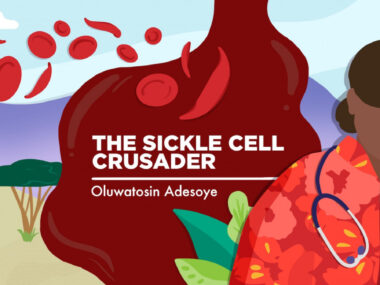Phase 2a trial starts testing liquid carbon monoxide therapy for SCD
HBI-002 taken as drops in mouth, intended for long-term use at home
Written by |

The first participant with sickle cell disease (SCD) has been dosed in a clinical trial of HBI-002, an experimental, low-dose, oral liquid formulation of carbon monoxide being developed by Hillhurst Biopharmaceuticals, which expects to report initial data by the end of this year.
“Dosing the first subject marks a significant milestone,” Andrew Gomperts, co-founder and CEO of Hillhurst, said in a company press release. “We look forward to advancing with this trial and expect the first readout by the end of 2025.”
Trial partly funded by $3M NIH grant
Backed partly by a $3-million grant from the National Heart, Lung, and Blood Institute, part of the National Institutes of Health, the open-label Phase 2a clinical trial (NCT06144749) is testing HBI-002’s safety and tolerability when given at multiple doses in up to nine patients.
The trial may still be recruiting adults and adolescents, ages 14 to 55, with a diagnosis of SCD at two sites in Panama. Patients may or may not be receiving hydroxyurea, but if they are, the dose must be stable and taken as prescribed for at least one month before joining the trial.
Researchers are also looking at pharmacokinetics — how HBI-002 enters, moves through, and exits the body — and how well it works at easing pain. The readout will inform the design of a larger Phase 2b clinical trial that the company is planning for 2026.
In SCD, abnormally shaped red blood cells block blood vessels and reduce the amount of oxygen delivered to body tissues. This can cause sudden episodes of severe pain called vaso-occlusive crises (VOCs). Hydroxyurea is approved to help reduce the frequency of these episodes, but not all patients respond well to it.
“There remains a substantial unmet medical need in preventing the painful vaso-occlusive crises experienced by sickle cell patients. We are hopeful that our novel drug product can provide meaningful relief for patients and their families,” Gomperts said.
Carbon monoxide can be toxic when inhaled at high doses because it competes with oxygen for binding to hemoglobin, the protein in red blood cells that transports oxygen throughout the body. However, at low doses, carbon monoxide can actually increase hemoglobin’s affinity to bind to oxygen, reducing hemoglobin polymerization (clumping) and red blood cell sickling in SCD, while also helping to reduce inflammation. Altogether, these effects may help lower the risk of VOCs.
HBI-002 is designed to deliver a low dose of carbon monoxide in liquid drops taken by mouth. It is meant for long-term use in a home setting, rather than being inhaled as a gas.
In a Phase 1 clinical trial (NCT03926819) involving 20 healthy volunteers reported no serious side effects with single or multiple doses of HBI-002.






